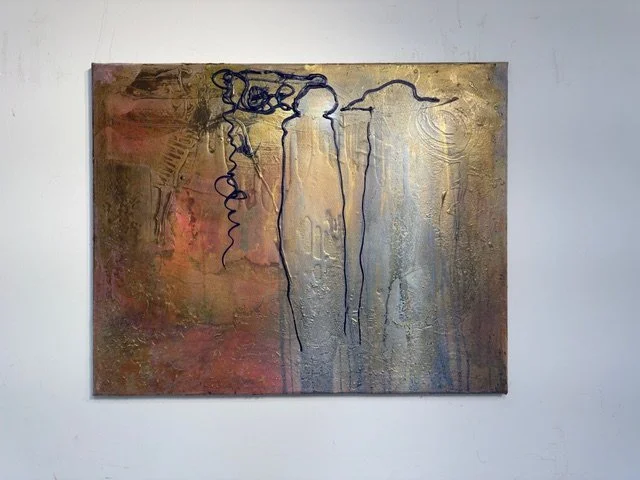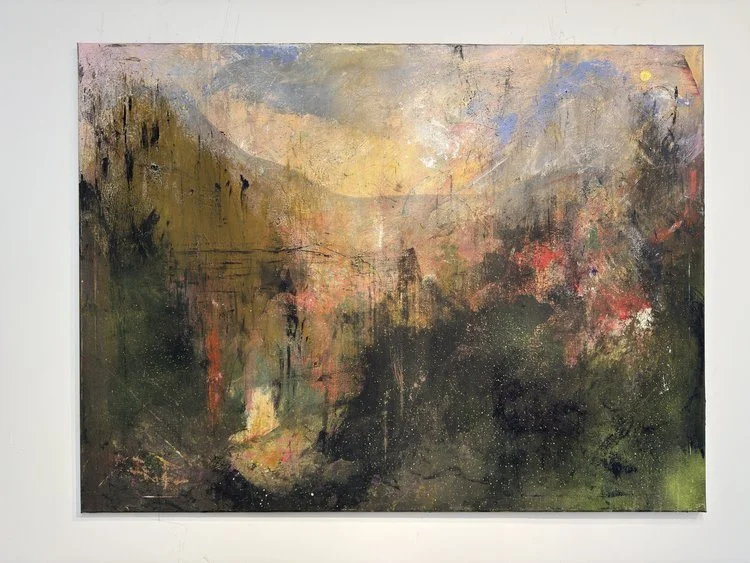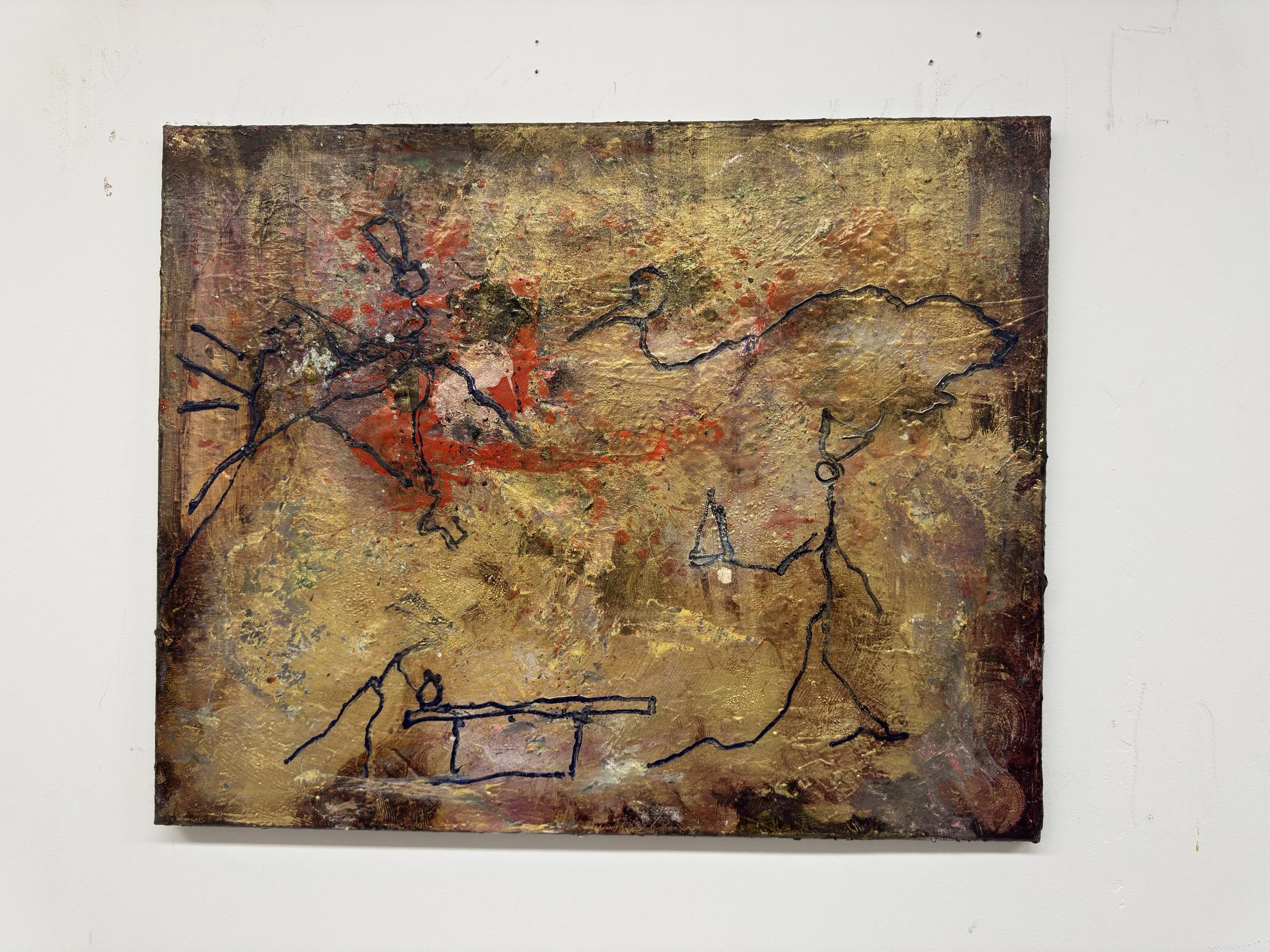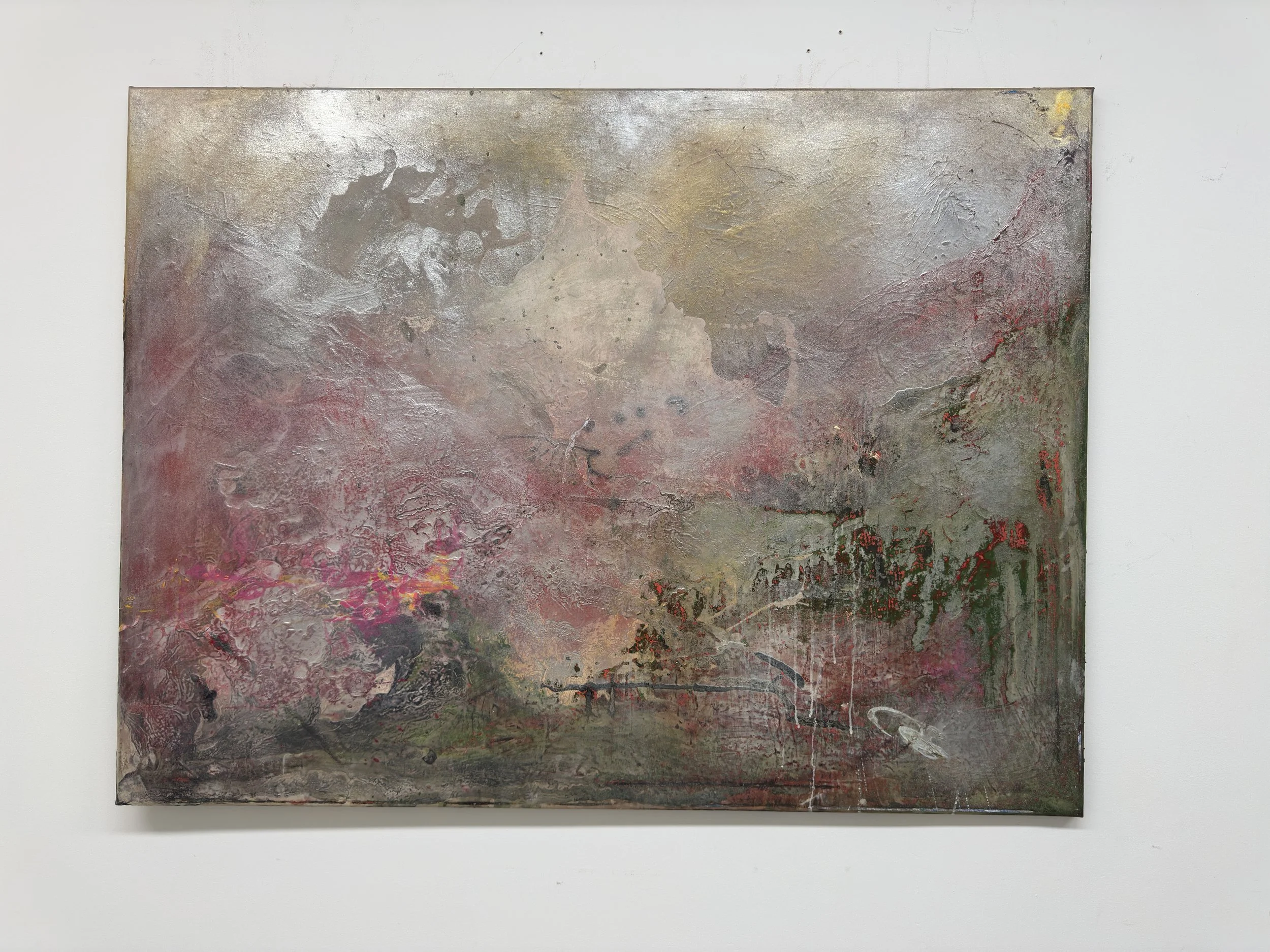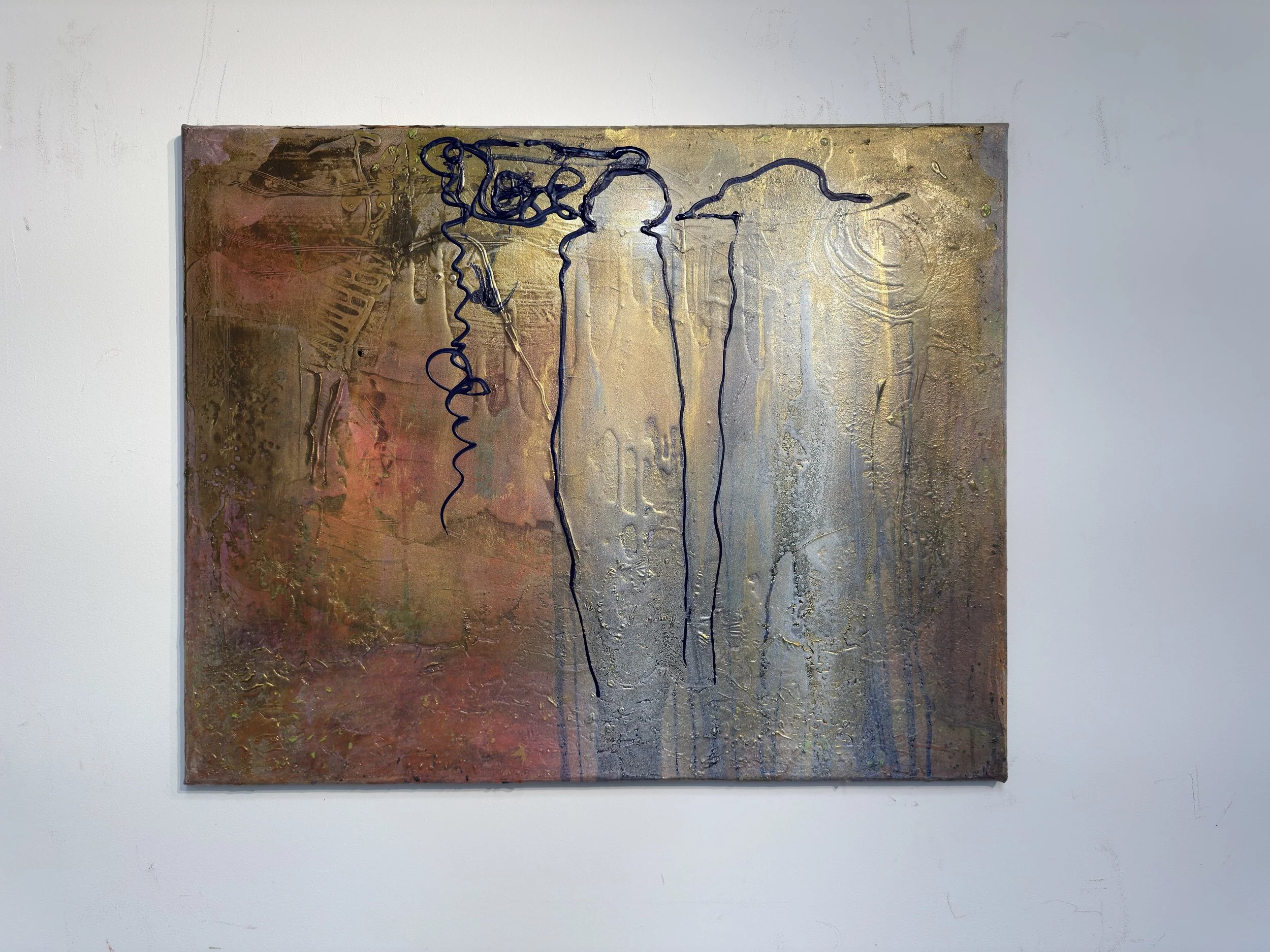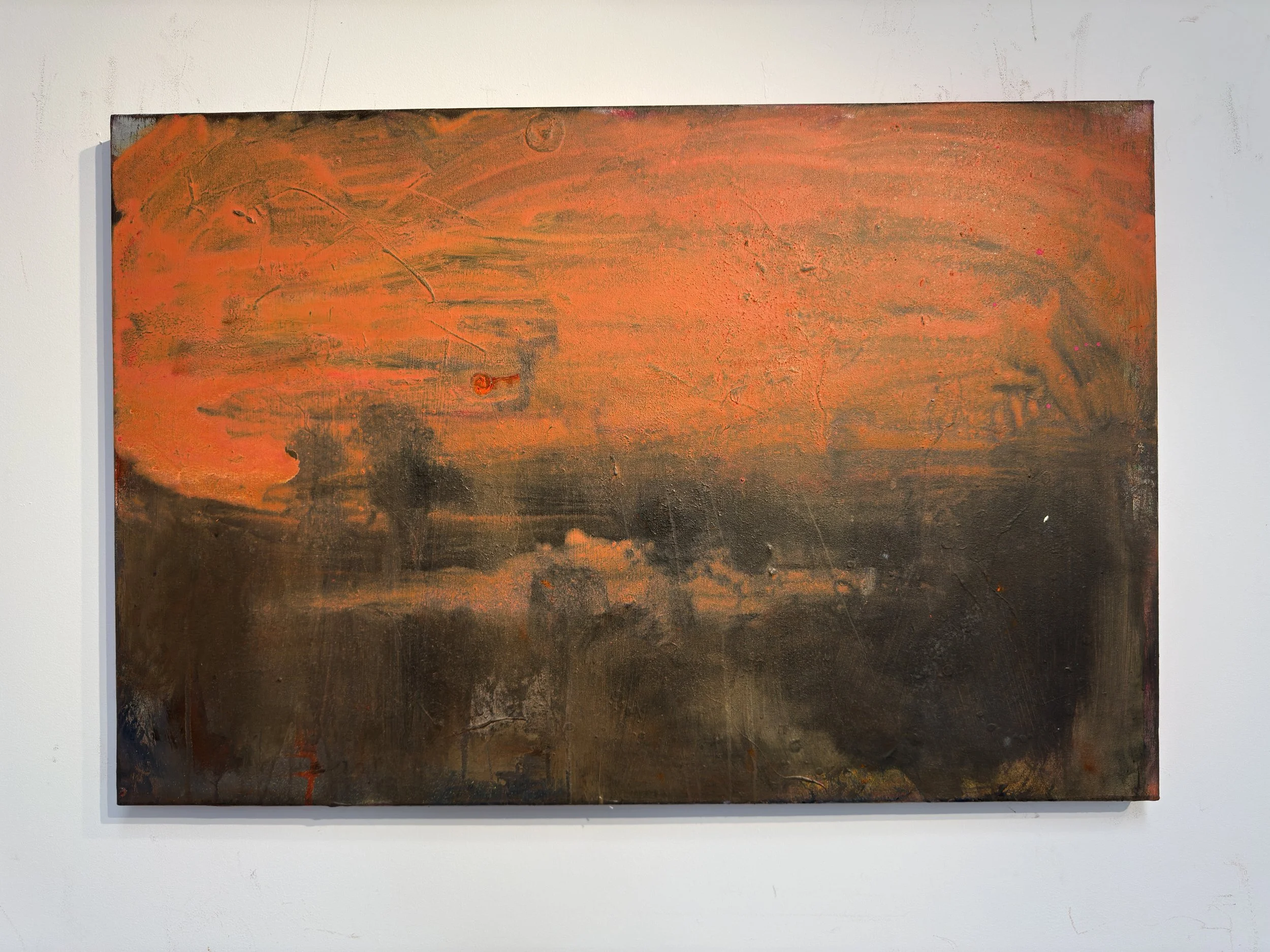Interview
Augusta Ryan
Mary Augusta Ryan is both a Tibetan medical doctor and artist. Her paintings reflect her years in the Himalayas, and then coming home to the States and practicing Tibetan medicine, Chinese herbal medicine, and death and dying with her patients. She brings to her art the influences of Hildegaard of Bingen, Hilma af Klint, William Turner and Anselm Keifer, among others. Her work is bought and sold privately on Instagram. As a reclusive mystic, her work is hard to find, but enjoyed among known collectors. Her husband, Tom Friedman and she live in a lake house abutting 50 acres, looking out into the wild, painting together. She bides her time painting in Western Massachusetts and Brooklyn, New York.
What is your background and how did you start your journey in the art world?
“I have always had one foot in the creative world. In college, I majored in anthropology, and minored in art. I went on to complete a PhD at Oxford University in medical anthropology, and devoted my time first to researching Tibetan medicine, and then finally becoming a Tibetan medical doctor. But art never left my heart: I always kept sketchbooks, poetry, and a journal of mystical experiences that I rarely shared. Of course, living in the Himalayas, and having many Buddhist teachers and deep meditative retreats, I came to discover that there is so much we cannot say with words. I came to art finally as my path in my 40s when I married Tom Friedman, a well-known conceptual artist. I realized that artists are unabashed mystics, playful jokers, philosophers, scientists. Everything can be expressed in art which is wordless and full of awe and fun.”
What inspires you?
“In meditation, I can hear music, prophetic moments, images and color can appear, objects, and even smells beyond this world, so refreshing and full life. In my maturity, I find I can be authentic due to the inspiration of seeing Hilma af Klint, a great mystic and artist who was unabashed about her visions. Her journals and creative expression tell it is okay to talk about the edge of the known and unknown. I am also inspired by Generation Z: they are all such natural mystics. They look up their astrological profiles, finding out their Jungian Enneagram type, and they love the edges of knowledge: space time, quantum jumping, manifestation, and using the subconscious mind to understand their every day.”
What themes do you pursue? Is there an underlying message in your work?
“My work is inspired by Asian, Greek, Roman, and Egyptian mythology and culture. I tend toward eternal themes that transcend local time. I am looking for that thread of truth in mythology and mysticism that tells us what we are experiencing now is an eternal truth beyond space and time. It’s the opposite of today’s identity politics in art. Instead of the specific individual placed in a specific culture and time, I’m interested in bringing our thought to Meta questions of life, death and our eternal presence beyond Space and Time.”
How would you describe your work?
“My work is a meditative practice. If you look at it, there are layers of memory that I then reveal later, like archaeology. There are at least 10 layers of paint, which I then cull back, and I find moments of clarity and wonder where I feel the painting is talking to me and wants me to reveal its message. I can use color as a prison gate of my soul that gets flung open. I’m an old soul. Through using scratching, wiping, and buffing, something very old and meaningful suddenly appears. I love the antiquated robes for example, of one of my Tibetan Buddhist teachers, Lama Zopa. I was able to get the feeling of his beautiful robe, so old and never washed, come through one painting. I place in my paintings also visions from my meditative practice. They become important to someone beyond me, as a beautiful message of awe and the eternal.”
Which artists influence you most?
“Tom Friedman is my husband, so of course I am very influenced by the conceptual and spiritual investigation of his work. He has taught me so very much. Hilma af Klint, and Hildegard of Bingen gave me permission to be an artist and mystic, and I am so grateful for that. Helen Frankenthaler really taught me in every interview I’ve watched to trust my gut and go with the essential feeling of ‘this feels right’ and ‘do that.’ William Turner, Gerhardt Richter, and Giacometti of course can be seen in some of my figures and in the composition. Anselm Keifer has always fascinated me.”
“My work is a meditative practice. If you look at it, there are layers of memory that I then reveal later, like archaeology.”
What is your creative process like?
“Agnes Martin taught me to arrive at work and sit and contemplate what I am going to do. I look at my journal. I plan. I put on some good music, like Sibelius, Brahms, Bad Bunny, Square Pusher, Brazilian Jazz - whatever the moment calls for. And then go to work. I usually have 3-4 pieces going at the same time. I paint with my hands, brushes. I use spray paint, Acetone, scrub brushes, whatever it takes, and whatever is at hand. It can get pretty fast and wild!”
What is an artist’s role in society and how do you see that evolving?
“Artists gentrify neighborhoods: they move into rusty, scary areas of New York, for example, and then later these areas become hip and more valuable to society. In the same way, I think artists dip their toes into scary, new psychological water: we delve into taboo areas, and we bring the ideas that are taboo to the masses, and then they get gentrified, or acceptable, to society. For example, I am authentically and proudly a mystic artist, and I can see this becoming more acceptable as a genre. Recently, science found that water has memory, and I think that paint has memory. Paint is water, is memory, has consciousness, and we interact with it. Masaru Emoto shows how water had consciousness. I think paint has consciousness. I think artists in abstract expressionism knew that. And so do I. I see the role of art in society as the ultimate spiritual investigation. Now, in this market driven time of art, it is especially important that artists stay authentic, courageous, and remain the voice of the collective unconscious. We are the awakening.”
Have you had any noteworthy exhibitions you'd like to share?
“I haven’t had any noteworthy exhibitions: mostly local. I am lucky to include good collectors who have my work, however. My most meaningful shows are as follows. Hilma af Klint has an amazing show at MoMA ‘What Stands Behind Flowers,’ soon to come up this May, and I cannot wait! Grace Wales Bonner had a phenomenal show which was the Artist’s Choice Exhibition at MoMA, called Spirit Movers which explored Black spirituality and artistic practices. Zoe Whitley, in 2020 curated ‘Possessions: Spirituality and the Art of Our Time.’ I am also excited to see Jack Whitten’s paintings. I feel a very strong pull to his work, and our process seems similar: there is so much movement and unpredictability in his work, and he uses a similar meditative practice where he almost seems to surrender to the materials and is looking for that Aha! moment. He calls his paintings ‘sheets of light.’”
Instagram: @maryxryan2


